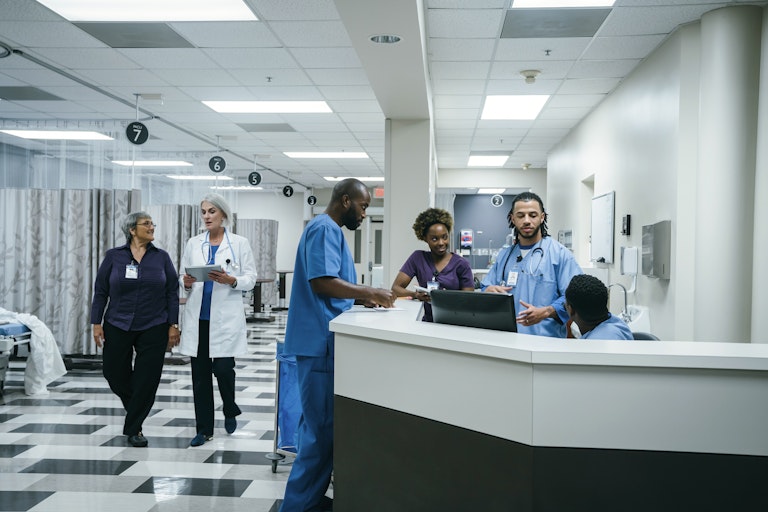Good communication and understanding of the roles of other disciplines in a health care team has been found to result in fewer medical errors, reduced medical costs and a better patient care experience.
Take this scenario for example: Mr X has had a stroke and has been admitted to hospital. He sees a doctor who refers him to a specialist. These appointments are followed by others with an occupational therapist, a physiotherapist and a dietitian. These are separate appointments with each medical professional. This is time consuming, expensive and repetitive for Mr X as he has to give his medical history to different people and possibly do similar tests.
This can be prevented if the medical professionals follow a team (interprofessional) approach, which includes more than one professional, as shown in the example above, working on one case.
Since interprofessional education is a new approach to learning at university in South Africa, it’s important to see how ready students are to follow it at the start of their higher education. The Faculty of Community and Health Sciences at the University of the Western Cape in South Africa adopted this approach to education in response to the national health policy, which calls for collaboration in healthcare.
Assessing and understanding whether readiness for interprofessional practice actually improves over the years of the students’ tertiary training as future health professionals is essential. In most disciplines students exit as front-line workers. They need to understand their role in the health team as soon as they start work.
We conducted a survey among healthcare students at the University of the Western Cape to determine their readiness for learning in an interprofessional manner.
We assessed areas such as teamwork and collaboration, professional identity and roles and responsibilities. We needed to ensure that when students leave university, they are ready for the world of work.
What we found
The findings from our research revealed that students valued a team approach to learning with other students from different fields of study. Students enjoyed sharing experiences and, in general, they showed a positive attitude to interprofessional education in all years of study.
The study showed that readiness for teamwork improved from the first year until their final year. This increased the students’ competency when entering the world of work as health professionals.
Our study also found that students who weren’t part of all aspects of the interprofessional education curriculum were less prepared to work together as a team. They lacked the necessary competencies for teamwork.
Our study shows it’s essential to systematically build students’ understanding of their role in an interprofessional team. This was supported by previous studies which indicated that a scaffolding approach is beneficial.
In our study gender seemed to influence the scores, with female students valuing professional identity, teamwork and collaboration. We also found that senior students were more open to teamwork and collaboration compared to juniors. Senior female students displayed a more positive professional identity than their male counterparts.
When students are ready to work within a team, they are able to effectively communicate as they understand their role within the team and the roles of all other team members. Another key skill is the ability to resolve conflict effectively.
Lessons learnt
Engaging students in an interprofessional education approach from their first year of study can have a positive impact. It results in a willingness to continue to learn in this manner.
A range of learning activities is needed to produce the positive output over the years of study. Examples of these learning activities are case study discussions, workshops, simulation-based activities and common clinical placements. Team competencies during these learning activities can be assessed through reflective clinical portfolios, reflection and evaluations.
Our study also indicated that if health professional students are exposed to positive role modelling throughout their education, it can help to develop values for working within teams. We found role modelling from peers to be positive.
Other research studies have shown that students whose undergraduate training included an interprofessional curriculum tended to be more confident than those who didn’t have the opportunity to participate in an interprofessional curriculum.
Going forward
Designing a curriculum that guides students towards interprofessional practice takes careful consideration. The outcomes of the curriculum need to ensure that students attain all the interprofessional knowledge, skills and attitudes (competencies) they need by the time they exit university.
This type of curriculum, with its specific activities and assessment methods, should be packaged in the form of an interprofessional model, to create a clear understanding of the type of health profession graduate that will be produced.
If universities are successful in producing such graduates who are able to work effectively in a team, the healthcare system will be strengthened. This would improve the health outcomes for all patients, their families and communities.
Mr X wouldn’t have to explain himself over and over to different health professionals. He’d receive adequate care from the different practitioners who could address his challenges from different perspectives.

